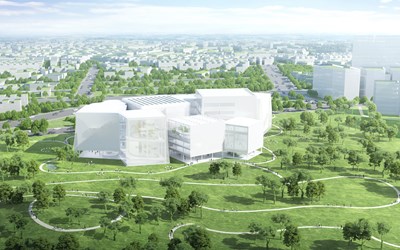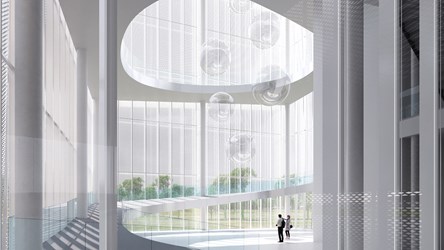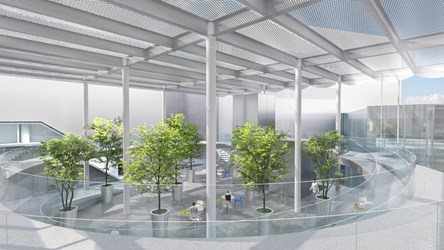
Part of Taichung Green Museumbrary, the Taichung Art Museum represents an integration between contemporary art museum, library resources, and public parkland. Its goal is to foster the opportunities for cross-disciplinary artistic explorations, public and educational programs. More than a cultural institution, it serves as a vibrant public space, igniting conversations and connections among its diverse visitors. The Taichung Art Museum actively connects and responds to the global issues from the cultural context of Taichung, positioning the city as a hub for artistic exchange between Taiwan and the global community. It aims to expand new cultural perspectives and contemporary values, creating a cultural landmark for an international city.
Designed by the architect Kazuyo Sejima and Ryue Nishizawa (SANAA), the Taichung Art Museum will include approximately 40,000 square feet of indoor galleries and outdoor exhibition spaces such as sky bridges and cultural forest atop its roof, providing long-awaited opportunities to show more of its unsurpassed collection of postwar and contemporary Taiwanese art in tandem with leading-edge temporary exhibitions. Another big gesture of the design is the museum atrium. Embracing natural lights with its mesh structure, the atrium accentuates transparency and accessibility via its upward spiral ramp connecting the visitors to diverse galleries.
SANAA’s design vision also embodies this continuous flow across indoor and outdoor, culture and nature, art and landscape. To achieve this lightweight and transparent structural design, the eight buildings of the museum-library complex are constructed largely with semi-transparent materials such as glasses and expanded metal mesh. Each of the gallery rooms, connected by the ramp, fosters a convergence of aesthetic experience at every juncture. Meanwhile, taking the climatic advantages of Taichung into consideration, SANAA proposes to elevate certain buildings and transform the assumed ground floor of the museum into expansive, sheltered public spaces.

 Facebook
Facebook
 Twitter
Twitter
 LINE
LINE

